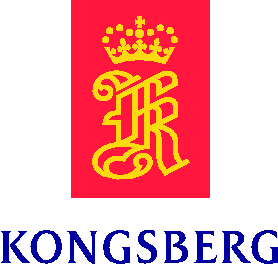|
You are not Logged in! Log in to check your messages. |

|
|
Check todays hot topics |
Web2Project Sign in
Project UAN

Underwater Acoustic Network (UAN)
UAN objective is to conceive, develop and test at sea an innovative wireless network integrating submerged, terrestrial and aerial sensors for the protection of off-shore and coastline critical infrastructures. This project is funded by EU under FP7 Collaborative project ICT/Security with 2.95 MEuro for 3 years. Starting date: October 1st, 2008 [official UAN web site].
Abstract:
The UAN project aims at conceiving, developing and testing at sea an innovative and operational concept for integrating in a unique system submerged, surface and aerial sensors with the objective of protecting critical infrastructures, such as off-shore platforms and energy plants. The security of such economically vital infrastructures requires an integrated approach involving underwater and land/air sensors and actuators for surveillance, monitoring and deterrence. In particular UAN focuses on a security oriented underwater wireless network infrastructure, realized by hydroacoustic communication. The UAN concept is to gather environmental information during the acoustic transmission and use it to predict the acoustic propagation conditions and the optimal obtainable performance at any given time. This information is used in the communication system for precise tuning. This tuning will take place at two different levels: i) by improving the basic point-to-point connection, by introducing physical and geometric constraints in the channel equalization and optimization process of the communication settings and ii) at the macro network configuration level by adapting node geometric configuration to the acoustic propagation conditions predicted from the environmental observations. This can be done in depth or in range by moving nodes placed on AUVs either to increase the point-to-point communication capacity or by serving as relay nodes to more distant, and at that time, inaccessible fixed nodes. This is a rather new approach that requires a better understanding of the acoustic propagation physics as well as a capacity to include that knowledge into technologically advanced communications modules and algorithms for underwater communications. The UAN project builds on a multidisciplinary consortium of technologically advanced industries, field experienced university labs and governmental agencies, thus grouping the required knowledge and experience.
Objectives:
 to define methodologies, technologies
and procedures for the implementation
of underwater acoustic communication networks to be integrated as a component of a
multi-media network for surveillance and monitoring of critical at sea infrastructures.
to define methodologies, technologies
and procedures for the implementation
of underwater acoustic communication networks to be integrated as a component of a
multi-media network for surveillance and monitoring of critical at sea infrastructures. to determine the performance
characteristics (bandwidth, achievable bit rate, resilience/delay time, maximum range, etc.)
of digital transmission over acoustic underwater channels as a function of transmission
frequency, signal modulation, environmental characteristics (including sound speed as a
function of space and time, bathymetry, reverberation level, ambient noise, etc., and
channel geometry source/receivers depth and range).
to determine the performance
characteristics (bandwidth, achievable bit rate, resilience/delay time, maximum range, etc.)
of digital transmission over acoustic underwater channels as a function of transmission
frequency, signal modulation, environmental characteristics (including sound speed as a
function of space and time, bathymetry, reverberation level, ambient noise, etc., and
channel geometry source/receivers depth and range).
 to implement a generic underwater
ad-hoc mobile acoustic network (MANET) composed by fixed and mobile nodes. In particular,
the mobile nodes will have the role of adapting their position in order to optimize
the network performance
as a function of the space-varying and time-varying environmental characteristics of the
channel. In order to achieve a similar performance optimization, fixed nodes will need
to implement adaptive signal equalization algorithms for compensating the transmission
medium variability. The implemented ad-hoc network must be reconfigurable and scalable,
in order to allow easy replacement/substitution of nodes that may fail during operation,
and the insertion of additional nodes. Moreover, the implemented algorithms, in particular
those for channel adaptation, must be locally resident in the nodes (distributed algorithms)
and not rely on centralized information.
to implement a generic underwater
ad-hoc mobile acoustic network (MANET) composed by fixed and mobile nodes. In particular,
the mobile nodes will have the role of adapting their position in order to optimize
the network performance
as a function of the space-varying and time-varying environmental characteristics of the
channel. In order to achieve a similar performance optimization, fixed nodes will need
to implement adaptive signal equalization algorithms for compensating the transmission
medium variability. The implemented ad-hoc network must be reconfigurable and scalable,
in order to allow easy replacement/substitution of nodes that may fail during operation,
and the insertion of additional nodes. Moreover, the implemented algorithms, in particular
those for channel adaptation, must be locally resident in the nodes (distributed algorithms)
and not rely on centralized information. the specification of requirements,
methodologies and specific algorithms for integration of a MANET into the overall security
system of the critical infrastructure. While this is not in itself a research issue, it
is mandatory to obtain easy, system independent integration among the ad-hoc underwater
network and the land/aerial network(s). This imposes additional constraints and requirements
on the underwater network and must be dealt with at design level.
the specification of requirements,
methodologies and specific algorithms for integration of a MANET into the overall security
system of the critical infrastructure. While this is not in itself a research issue, it
is mandatory to obtain easy, system independent integration among the ad-hoc underwater
network and the land/aerial network(s). This imposes additional constraints and requirements
on the underwater network and must be dealt with at design level. to continuously integrate and adapt the
developed methodologies to the requirements set forth by the end users in order to make sure
that the final product clearly responds to the operability and field test robustness,
autonomy and performance.
to continuously integrate and adapt the
developed methodologies to the requirements set forth by the end users in order to make sure
that the final product clearly responds to the operability and field test robustness,
autonomy and performance. experimental verification with several
engineering tests at sea for system tuning and a final global test in realistic conditions
of the performance of a prototype system assembled according to the methodologies and
algorithms determined in the project.
experimental verification with several
engineering tests at sea for system tuning and a final global test in realistic conditions
of the performance of a prototype system assembled according to the methodologies and
algorithms determined in the project.
Partnership
Main contractor
Partners
 ISME - Integrated Systems for Marine Environemnt
ISME - Integrated Systems for Marine Environemnt
 FOI - Swedish Defence Research Agency
FOI - Swedish Defence Research Agency
 Project funded under the 7th Framework Program of the European Union
Project funded under the 7th Framework Program of the European Union



